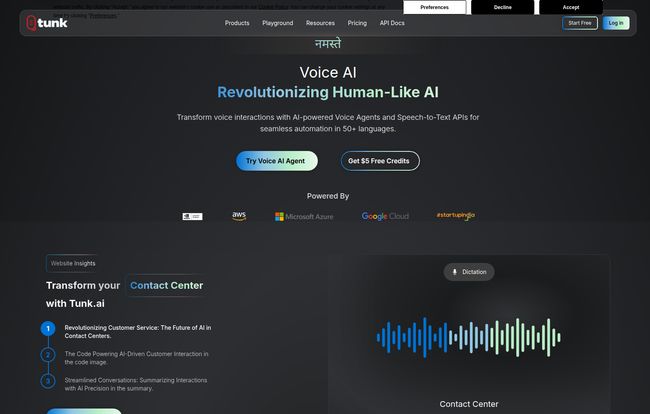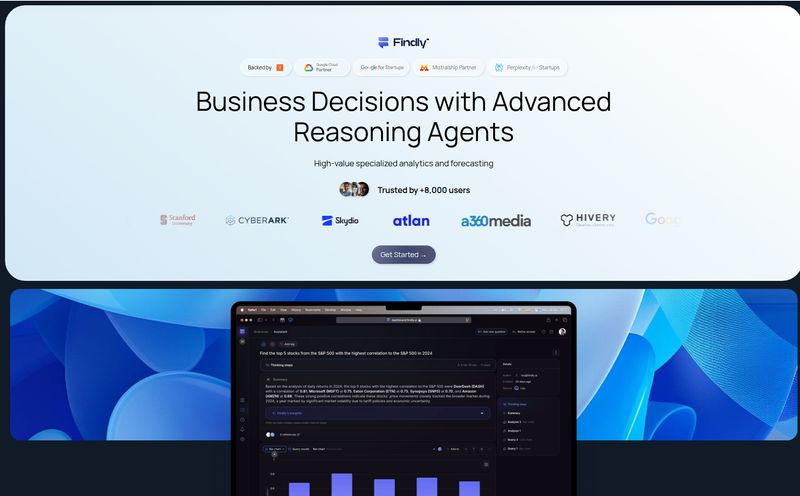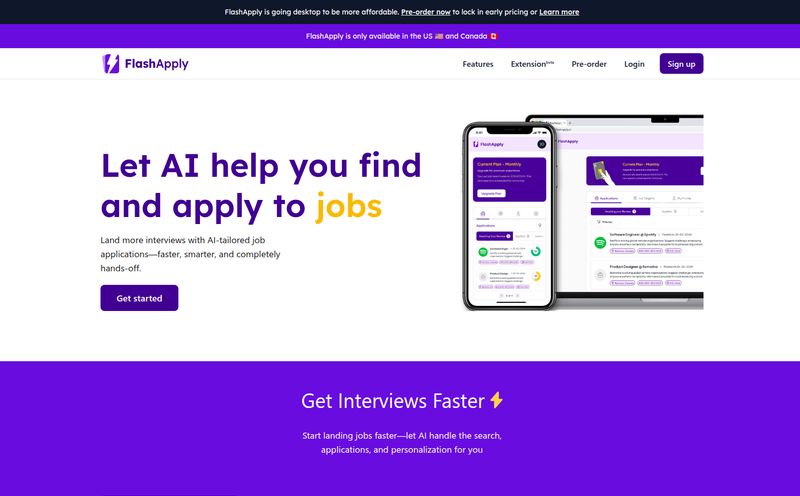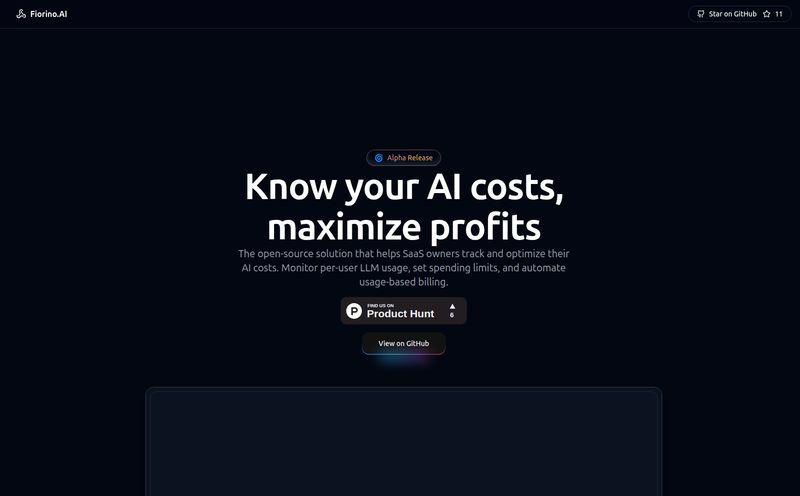I’ve lost count of the number of hours I've spent hunched over my keyboard, headphones on, trying to decipher a muffled recording of a conference call. You know the drill. Play, pause, type. Rewind. Was that “launch” or “lunch”? The difference could be millions of dollars or just a sad desk salad. For years, speech-to-text has been a necessary evil in my workflow—a clunky, often inaccurate tool that promised to save time but usually just traded one headache for another.
So when I stumbled across a platform called Tunk.AI, my default setting was, admittedly, skeptical. The headline screamed, “Revolutionizing Human-Like AI.” Bold claim. Every AI tool these days claims to be revolutionary. But something about their approach, combining high-grade transcription with actual Voice AI Agents, caught my SEO-tuned spidey-sense. It felt... different.
Is it just another drop in the AI ocean, or is it the wave we’ve been waiting for? I decided to take a proper look under the hood. Let's get into it.
First Off, What Exactly is Tunk.AI?
Let's clear this up right away. Tunk.AI isn't just a transcription service. Thinking of it that way is like calling a smartphone just a phone. At its core, yes, it converts speech into text with impressive accuracy. But that's just the launchpad. The real magic is what it does with that text and how it can interact before it even becomes text.
It's a two-headed beast, in the best way possible. On one side, you have a powerful Speech-to-Text API designed for developers and businesses that need to process audio at scale. Think call centers, media archives, or legal depositions. On the other side, you have Voice AI Agents, which are designed to have intelligent, automated conversations. This isn’t your parents’ annoying “Press 1 for sales” robot. This is AI designed to understand, respond, and handle tasks. It's like having a tape recorder that not only transcribes the meeting but also has an assistant who can answer questions about it.
The platform is built to serve a ridiculously wide array of industries—from healthcare and finance to investigative journalism and education. That ambition alone tells me they're confident in their tech's flexibility.
The Features That Actually Matter
A long list of features can be more distracting than helpful. I prefer to focus on the stuff that actually moves the needle. And Tunk.AI has a few heavy hitters.
The Speech-to-Text Engine is a Workhorse
The foundation of any voice platform is its transcription accuracy. If the text is garbage, any analysis you run on it will also be garbage. Tunk.AI seems to understand this. They support over 50 languages, which is a huge green flag for any business operating on a global scale.
But it's the finer details that got my attention:
- Diarization: This is a fancy word for figuring out who is speaking. For anyone who has tried to transcribe a multi-person interview, you know this is a godsend. Instead of a wall of text, you get a clean script labeled “Speaker 1,” “Speaker 2,” etc. It’s the difference between chaos and clarity.
- Forced Alignment: This feature syncs each word with its precise timestamp in the original audio. Why does this matter? For video editors creating subtitles, researchers pinpointing specific quotes, or legal teams verifying testimony, this level of precision is non-negotiable.
The combination of these features means you're getting a transcript that is not only accurate but also rich with usable data right out of the gate.

Visit Tunk.AI
Voice AI Agents Might Be the Real Star
Okay, here’s where my professional curiosity really peaked. The promise of “human-like” voice agents is the holy grail of customer service automation. We've all been trapped in IVR hell, shouting “representative” into the void. Tunk.AI’s agents are designed to break that cycle.
Imagine a customer calling to check an order status. Instead of a rigid menu, a Tunk.AI agent can understand the natural language query, “Hey, I was just wondering where my package is?” and provide a real-time, intelligent response. The platform claims it can handle everything from simple queries to scheduling appointments and routing complex issues. If it works as advertised, this could fundamentally change how businesses manage their customer interactions, freeing up human agents for high-stakes problems.
Going Beyond Transcription with Analysis Tools
Getting a transcript is step one. Understanding what it means is step two. This is where Tunk.AI connects the dots. They’ve integrated Summarization and Sentiment Analysis directly into their workflow. After a long customer support call is transcribed, the system can automatically generate a concise summary and determine if the customer was happy, angry, or neutral.
For a product manager like me, that's pure gold. Instead of listening to 100 hours of customer feedback calls, I could scan through AI-generated summaries and sentiment scores to quickly identify trends and pain points. It transforms raw audio from a chore into a strategic asset. It's about working smarter, not harder—a cliché for a reason.
Taking it for a Spin: The Playground and Usability
I have a lot of respect for companies that let you play with their toys before you have to pay. Tunk.AI has an API Playground, which is basically a sandbox where developers or even just curious people like me can test out the API with their own audio files or sample data. It shows confidence in their product. You can see how the diarization works, check the transcription quality and basically get a feel for the engine. They even give you $5 in free credits to get started.
They also have a simple Editing Interface. No AI is 100% perfect, and anyone who tells you otherwise is selling something. The ability to quickly click into a transcript and fix a name or a piece of jargon is a small but critical feature that demonstrates a real understanding of the user’s needs.
The Million-Dollar Question: How Much Does Tunk.AI Cost?
Alright, let's talk money. Pricing is often where a great tool can fall flat. Tunk.AI has a two-tiered approach, and I have some thoughts on it.
First, one of my pet peeves: the main page doesn't list the exact per-minute transcription cost. You have to sign up to see the rate. I get the strategy—get the user in the door—but as a professional, I prefer full transparency up front. However, once you get to the pricing page, things become much clearer.
The AI Transcription Plan
This is their pay-as-you-go model. It’s perfect for startups, developers, or smaller projects where you don’t want to be locked into a hefty monthly subscription. The costs are broken down by feature, which is great for controlling your spend.
| Feature | Price |
|---|---|
| Transcription & Translation | $ / Minute (You'll need to log in for the exact rate) |
| Forced Alignment | $0.00072 / Minute |
| Summarization | $0.0015 / 1K input tokens + $0.0015 / 1K output tokens |
| Sentiment Analysis by LLM | $0.0015 / 1K input tokens + $0.00003 / 1K output tokens |
This granular pricing means you only pay for the advanced stuff like summarization when you actually use it. It's a fair model, assuming the base transcription rate is competitive.
The Enterprise Plan
This is the classic “Contact Us” package for the big fish. If you're dealing with massive volumes of audio, need a dedicated account manager, and require custom SLAs, this is your lane. It includes things like priority support, onboarding assistance, and higher security standards. No surprises here, this is standard for a B2B SaaS platform of this caliber.
My Unfiltered Thoughts: The Good, The Bad, and The Intriguing
After digging through the site and its features, here’s my honest take.
The Good: The feature set is incredibly robust. It’s not just a one-trick pony. The combination of high-quality transcription, diarization, sentiment analysis, and the forward-looking Voice AI Agents makes it a truly comprehensive platform. I also love that it's powered by major cloud providers like AWS, Google, and Microsoft. That signals reliability and scalability.
The Could-Be-Better: The pricing transparency, as I mentioned, could be improved on teh main page. And while “$5 Free Credits” is a nice offer, I’d love to see more context. How many minutes of transcription does that actually buy me? A little more detail would help set expectations.
The Intriguing: The “Audio to LLM” feature is fascinating. This hints at the ability to feed audio data directly into Large Language Models for complex reasoning, querying, and content generation. This is the cutting edge of AI, and the fact that Tunk.AI is building it into their platform shows they aren't just keeping up with trends—they're helping to set them.
So, Should You Give Tunk.AI a Try?
So we come back to the original question. Is Tunk.AI really revolutionizing anything? In a word, possibly. It's taking several powerful, but often separate, AI technologies and bundling them into one coherent, powerful platform. It’s a smart excavator in a world of simple shovels.
If you're a developer looking for a powerful and flexible voice API, the pay-as-you-go model and API playground make it a no-brainer to at least experiment with. If you're a business drowning in audio data—from customer calls to internal meetings—the automated summarization and sentiment analysis tools could provide a massive return on investment.
While I wish the pricing was a bit more upfront, the technology itself looks incredibly promising. Tunk.AI is more than just another transcription tool; it's a platform for understanding and automating voice communication. And in a world that talks more than it writes, that’s a very powerful thing indeed.
Frequently Asked Questions About Tunk.AI
- What is Tunk.AI used for?
- Tunk.AI is used for a wide range of applications, including highly accurate speech-to-text transcription, automated customer service with Voice AI Agents, call summarization, sentiment analysis for market research, and media content processing for journalism and entertainment.
- How many languages does Tunk.AI support?
- Tunk.AI supports over 50 languages for its transcription and voice AI services, making it suitable for global businesses and multilingual content.
- What is diarization in Tunk.AI?
- Diarization is the process of identifying and labeling different speakers in an audio file. Tunk.AI uses this feature to create a clean, easy-to-read transcript that clearly indicates who said what, which is perfect for interviews, meetings, and call recordings.
- Does Tunk.AI have a free trial?
- Yes, Tunk.AI offers $5 in free credits for new users to try out their Voice AI and Speech-to-Text APIs. This allows you to test the platform's capabilities with your own data before committing.
- Is Tunk.AI suitable for large businesses?
- Absolutely. Tunk.AI offers a custom Enterprise plan designed for high-volume users. It includes features like a dedicated account manager, custom service level agreements (SLAs), and dedicated support for migration and onboarding.
- How does Tunk.AI's pricing work?
- Tunk.AI primarily operates on a pay-as-you-go model for its AI Transcription plan, where you pay per minute for transcription or by token for features like summarization. For larger clients, a custom Enterprise plan is available.


![chatai[apps]](https://files.declom.com/chatai-apps_featured.jpg?)
